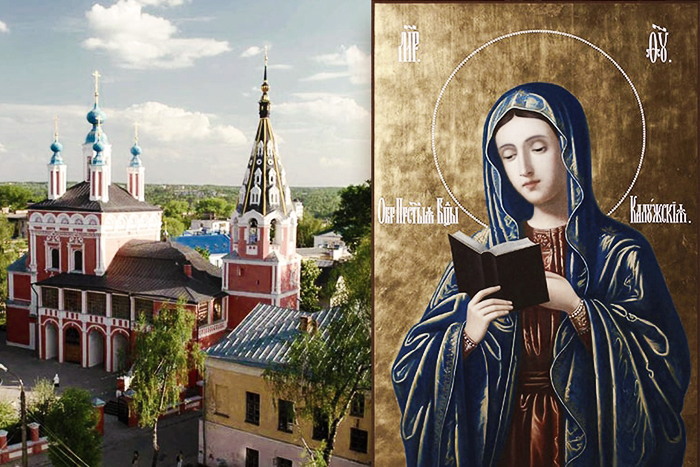
According to some estimates, the number of venerated icons of the Blessed Virgin Mary is about seven hundred, many of them wonderworking – that is, they are famous for the miracles that have been performed through prayers in front of these images. I was always a little surprised and confused by this diversity, as well as by the fact that you can pray in front of various icons for various life issues and needs: when you are sick, when problems arise in your family life, when you are threatened by your enemies. It is advised to refer to a special “dedicated” image in each case.
If it isn’t a magical approach, then I don’t know what it is.
Given the current situation, I was interested to learn more about the icons of the Mother of God that have been glorified as those that helped people to recover. Of course, the first icon that comes to mind is the icon of the Mother of God the Healer. Moreover, I was recently told about it by my friend, an icon painter, because a couple of years ago she had painted a large temple icon of the Healer. I have found some interesting information and I will gladly share it with you.
Originally, a slightly different icon was revered under this name, which had appeared in Georgia back in the 4th century. What exactly the Georgian Healer looked like is now unknown. It probably depicted the Virgin Mary healing one or more sick people.
An icon of the same name on which the Virgin is shown standing at the bedside of a sick person is widely known in Russia. The iconographic plot of the wonderworking image was based on the legend of the miraculous healing described in the work of St. Demetrius of Rostov The Dew on the Fleece.

The legend tells how one minister of the Church named Vincent (the story doesn’t tell us which ministry or rank he had) became seriously ill. He lay in bed for some time and finally lost his strength. The man’s death was approaching by the minute and his hopes for healing had already faded. Even in such a grave condition – and he could not even talk from pain – Vincent was still praying to the Virgin Mary, not asking for a recovery, but simply praising her and glorifying the Most Pure Mother.
Just when Vincent was already dying, he saw the Virgin Mary, who appeared in his room, surrounded by a wonderful radiance. She was dressed in royal attire and held a scepter in her hand. She was accompanied by a radiant young man in white, who was Vincent’s Guardian Angel. The angel pleaded with the Mother of God to heal the man. The Virgin heeded these pleas. She came to Vincent’s bed, touched the dying clergyman with her wand, and a miracle happened – the disease quickly left him. The Healer disappeared from view, and the cleric, who had received the heavenly mercy, soon became so strong that in a few days he returned to his church service. He told everyone who knew him about his meeting with the Queen of Heaven. The Healer icon was painted in memory of this occasion.
I looked attentively at some of the versions of the icon. A version is a term for a specific variety of the established canon used in medieval iconography. Many images corresponded to the accepted narrative about the icon.
However, some of the icons had the Mother of God’s breast uncovered, and it surprised me, as this kind of iconography was known only for the icon of the Mother of God the Breastfeeding.
I turned to the direct source of the legend, namely, to the work of St. Demetrius, and the very history of the healing of the sick is described there as follows: “When Vincent lay on his bed of sickness and was about to die, suddenly our Most Holy Lady appears to him and, having slightly opened her maiden nipple and clenched it, sprinkled a little milk into the sick person’s mouth and became invisible. The patient jumped up, quickly put on his clerical garments and ran to the church. He joined the choir, and took his place in the middle of the singing clergy, who were startled and shaken by the sudden change and the unexpected recovery – because no one expected to see him alive. When asked about the reason for his recovery, he revealed it to everyone, glorifying his graceful Healer and how She sprayed milk on his mouth – the traces of that milk were still on his lips… Oh, a glorious miracle!”

Next, the saint says: “For the Most Merciful Healer could have healed Her servant in any other way, by word or touch, but She chose to use this strange method of healing: She sprinkled the man’s lips with milk, because every hour his mouth had been praising the Most Merciful Virgin, here on earth, and thus She paid tribute to him. Therefore, everybody who sees and hears it should give thanks with one mouth and with one heart to the most glorified Virgin Mary”.
In addition to the uncommon iconographic image, the story is remarkable in that it is not a story of repentance or a heartfelt request for healing, but the story of the Virgin healing the patient out of grace and on her own initiative at the most necessary time, which once again testifies to God’s benevolence and care for every human being.



